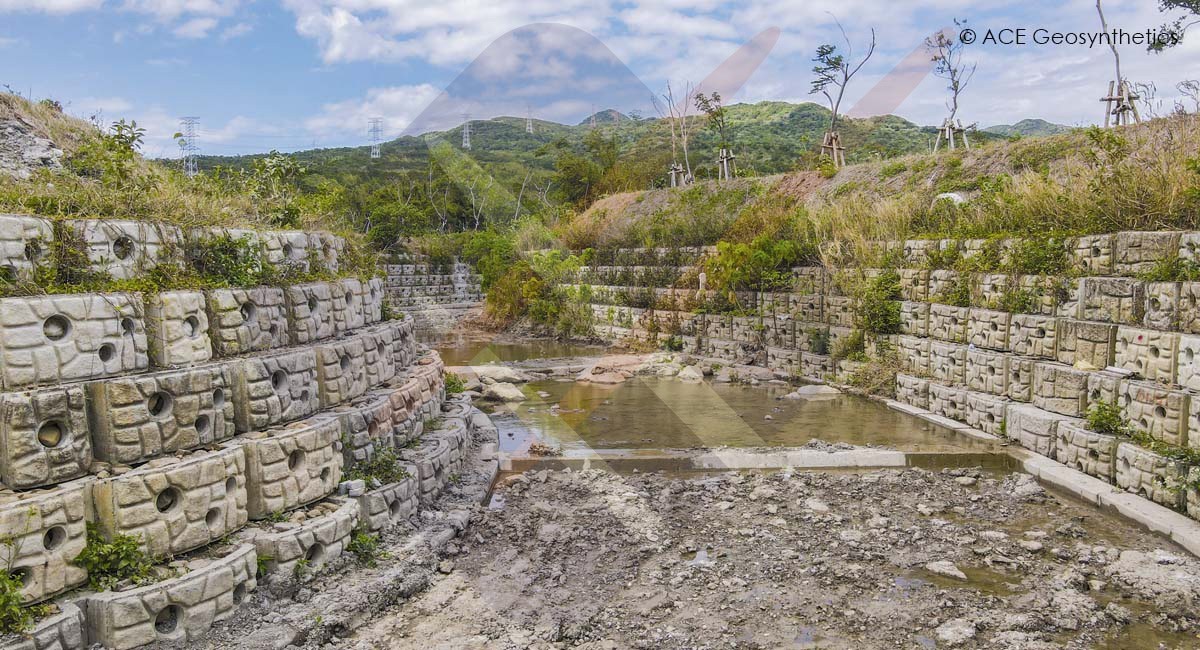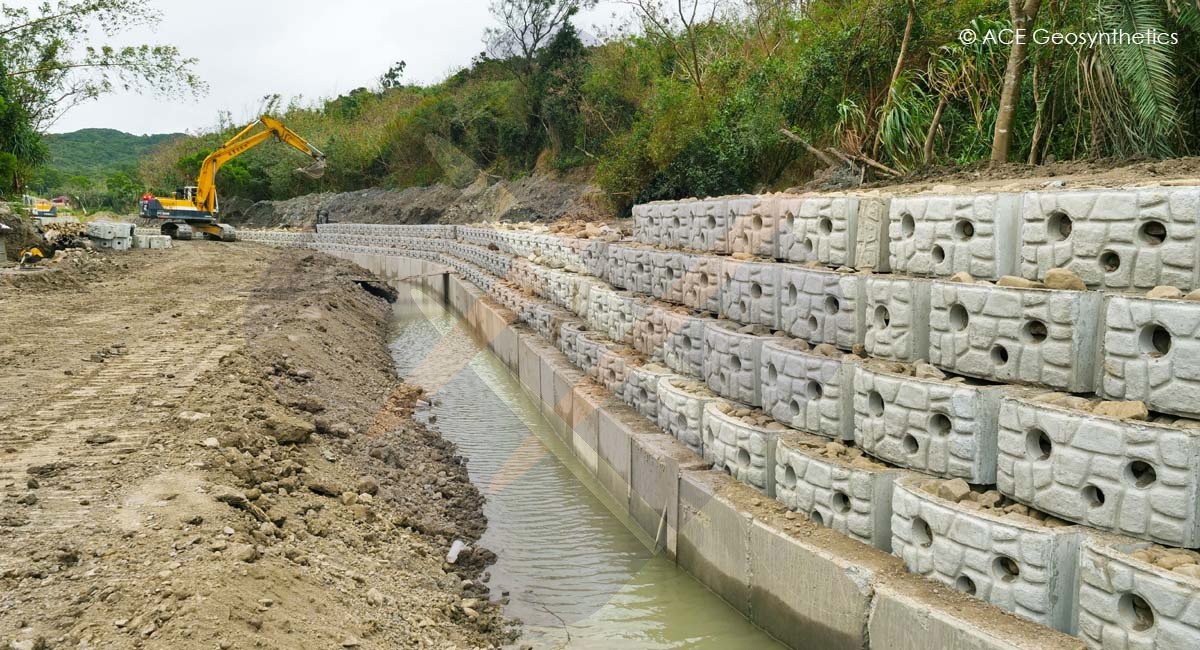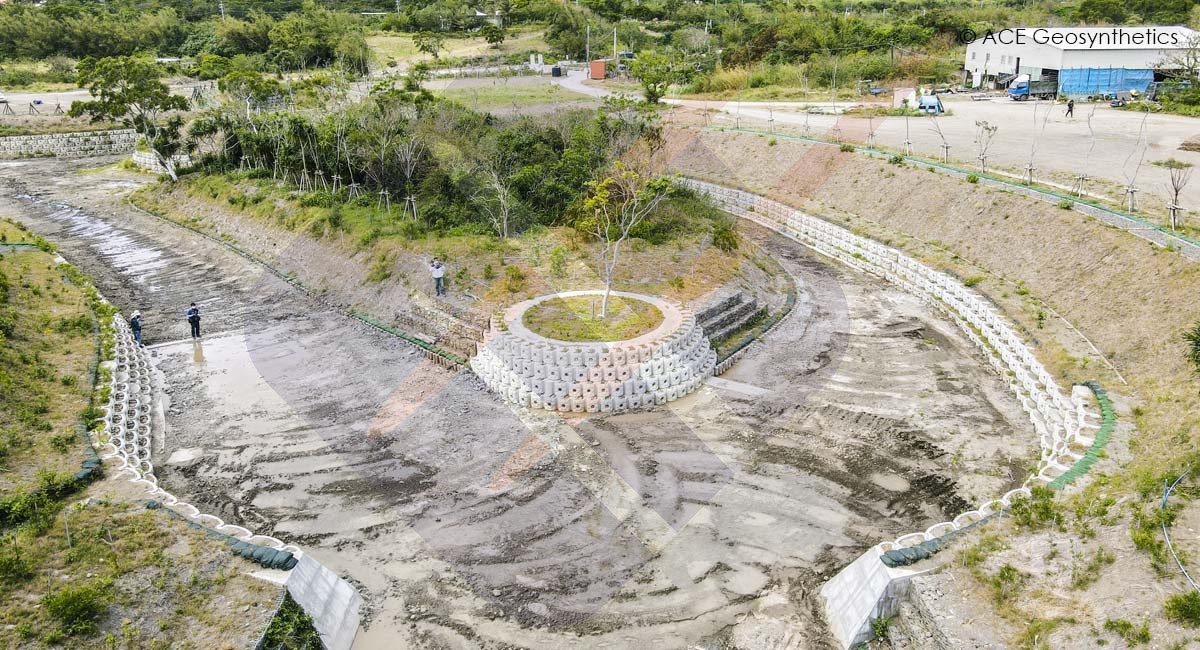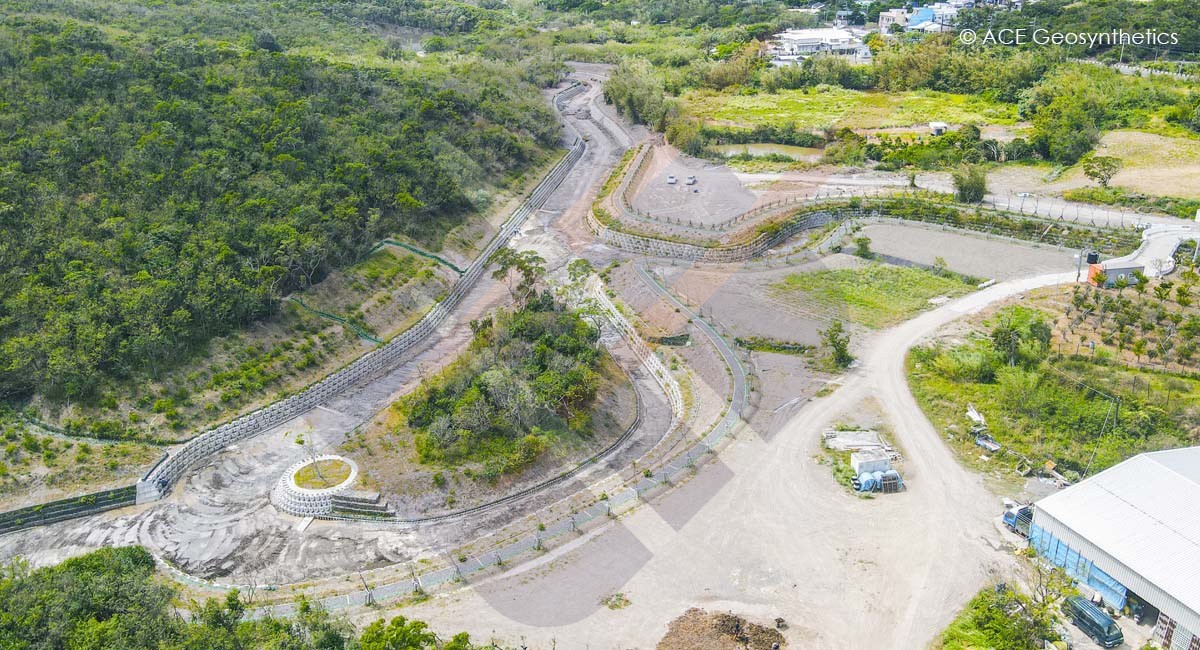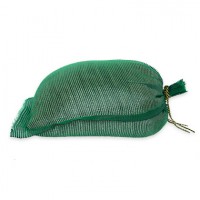Taiwan | 2020-2024
Creek Restoration at the Downstream of Chuhuo Bridge, Phase II, Pingtung County, Taiwan
Products:ACESandbag™ EC, ACEModule™
Application: Revetments, Channel Lining Protection
-
Background
-
Creek A on the downstream side of Chuhuo Bridge is the upper reaches tributary of Dongmen Creek. It flows southward for about 500 m and merges with Creek B flowing westward to become Dongmen Creek. The riverbank and riverbed of the Creek A have been scoured for quite a long time and thus endangered the safety of Chuhuo Bridge on Route No.200, which is an important artery for local tourism and agricultural transportation. In addition, Creek B, another upper reaches tributary of Dongmen Creek, also suffered from severe silting, which caused the riverbed to rise and the flow of the creek to divert and led to serious overflows into farmland on both sides of the creek. The authorities thus issued treatment procedures for restoration in three phases.
-
Problem / Task
-
The phase I of the project has effectively solved the problems of scouring and the instability of the riverbank for Creek A. The target of phase II focused on the sediment control to mitigate the siltation of the Creek B. The site approximately produced an annual accumulation of sediment up to 3,600 m3. This is equivalent to about forty-seven 40-feet container capacity. Such an enormous amount of deposits had caused the riverbed to rise and the flow of the creek to divert. The scouring significantly destroyed the riverbank and widened the extent of flooding for about 1~2 m, and thus jeopardized the surrounding farmland and houses. Hydraulic scouring has also damaged riverbanks or caused them to collapse seriously, which substantially ruined the surrounding natural ecological environment and limited the habitat of animals and plants as well.
Dongmen Creek is located within Kenting National Park, an eco-sensitive zone with abundant ecological resources. Therefore, conservation of the environment has been the major challenge for the restoration. In addition, construction projects in Taiwan also have faced severe labor and material shortages in recent years. Consequently, in addition to the traditional problems of soil and water conservation, the construction planning and design for this project must also call for engineering standardization, precast modularization and construction mechanization to improve current construction difficulties. The solutions of these challenging problems were the priority of this project. -
Solution/ Design & Construction
-
1. For the restoration of Creek B, riverbank should be particularly protected for those areas prone to scouring. L-shaped precast reinforced concrete module and one layer of gabions filled up with local cobbles were first laid down as the foundation of the revetment. Then, another three layers of gabions filled up with ACESandbagTM EC were stacked to build the revetment for slowing down the erosion of the riverbank. Local residual soils were used to fill up all the ACESandbagTM EC to maximize the consumption of the excessive residual soils. No residual soils were allowed to send out of the site. Finally, numerous local native species were planted on the restored slope to prevent the spread of the invasive species - White Popinac.
2. To restrain the sedimentation, a semi-through, sediment trap, steel grating open check dam was installed on the upper reaches of Creek B. A detention pond on the downstream side of Creek B also was placed. These facilities can largely eliminate the chance of sedimentation and also reduce the loading of future maintenance. The body of the check dam was filled up with cobbles or quarry stones to consist of a porous structure. It was used to intercept the driftwoods and to control certain amount of soil particles to the detention pond. Simultaneously, it was also allowing the flow of the creek to pass through smoothly and thus release the hydraulic force applied on the check dam. It not only can slow down upstream siltation, but also reasonably replenish the sandy materials for downstream.
3. To comply with the terrain in the lower reaches of Creek B and also create a flexible flood detention space, the flow of the creek was divided to two channels using the islet in the middle of the creek. The large one was used as the main flow and the other one was used as auxiliary drainage channel for disaster prevention in the event of flooding. At the front end of the islet that was prone to flow impact, precast hollow ecological concrete units, ACEModuleTM, were used to build a circular revetment. Groundsill works built using quarry stones were also placed on the riverbed to resist the scouring of water flow. In addition, the cross section of the main flow channel was widened from 6 m to 9-12 m to facilitate the discharge and ensure the flow unimpeded.
4. At the confluence of Creek A and Dongmen Creek, the current velocity exceeded 2 m/sec, which was too fast and presented high water impact force. The confluence scouring has made the depth of water up to 3-4.5 m. To give more protection, ACEModuleTM up to 3,278 pieces, were thus used to build the revetment. The flow velocity also can be reduced somewhat because of the designed rough surface of ACEModuleTM. By regulating the upstream flow with the check dam, the depth of the water has dropped to less than 2 m. The space of the hollow concrete unit was designed for ecological purpose. For lower layers (below water level) of the revetment, ACEModuleTM were filled up with cobbles and pebbles to provide habitat for aquatic animals. Above water level, ACEModuleTM for the upper layers were filled up with ACESandbagTM EC and they were stacked backward in a stepped upward manner. Such a design was able to create a green space for the environment, which allowed wildlife to move around freely.
5. For those areas of the creek that were prone to deposition, their potential for flow impact was low. Consider the climbing ability of amphibians and reptiles, lower stacked ACESandbagTM EC together with short wooden stakes were placed along the riverbank for toe protection.
-
Result
-
1. Eco-friendly Environment
To maintain an eco-friendly environment in Kenting National Park, ACEModuleTM have been adopted to build the main revetment. Such a design provided a base for plants growth, accelerated the restoration of vegetation and increased the friendly space for animal activity. The construction consisted of various riverbank protection methods according to local conditions. They have effectively restrained the excessive soils and rubbles in the upper reaches of Dongmen Creek and thus reduced the possible downstream debris hazard. Compared with the traditional reinforced concrete construction method, the overall project reduced about 40% of the concrete consumption and the carbon reduction up to 223 tons, which effectively mitigated the environmental impact. The completed project proved that the design and construction have successfully integrated into local ecosystem and achieved a balance between the engineering and the eco-friendly environment.
2. Attractive Structural Appearance
ACEModuleTM have been used for the main revetment at the site. These precast concrete units have been designed using special keyed connection, which not only adapt to the curvature along the creek, but also create an attractive arc appearance to enhance the visual beauty of the site.
3. Innovative Construction
Because of the shortages of labor and materials and the difficulties of waterfront activities, the constructions of revetment and foundation used ACEModuleTM instead of the traditional onsite concrete placing. These innovative procedures totally eliminated the necessary of skilled workers, reduced the construction downtime, and thus lower the total cost of the project and effectively improved the construction schedule. The construction quality of ACEModuleTM also is better than that of site concrete.
4. Application of information Technology
Before the construction, Building Information Modeling (BIM) technology was used to simulate ACEModuleTM stacking process. BIM envisages virtual construction of each unit for the revetment prior to its actual physical construction to reduce uncertainty, improve safety, work out problems, and simulate and analyze potential impacts. BIM also prevents errors due to conflict, whereby the computer model visually highlights to the team where the revetment may wrongly be placed. The application of BIM allowed the designer easily to work with the contractor for every building procedure until the completion of the revetment.
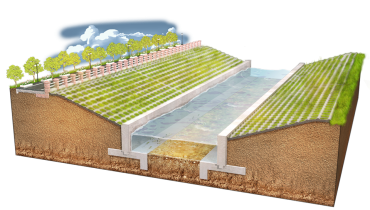
Revetments
River embankment defenses are regularly upheld by artificial revetments. Several cost-effective ACE geosynthetic options exist that frame riverbanks, curtailing...
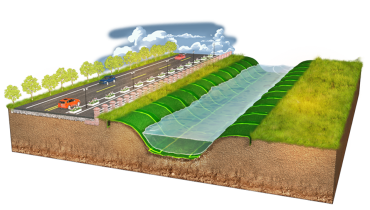
Channel Lining Protection
Channel or river without lining protection, it is easy to occur erosion that changes the flow direction or causes the water to overflow and flood. Laying the pr...
Related Products
Download
Similar Case Studies
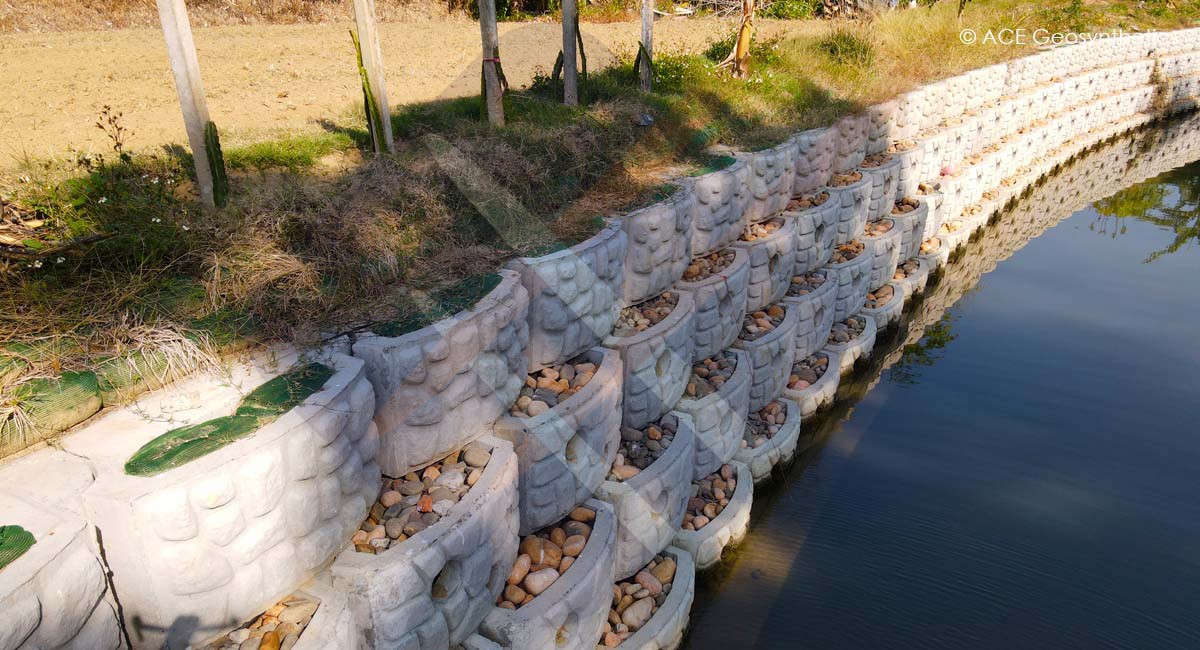
The Application of ACEModule™ for Creek Restoration at the Upstream of Shubu Concave Bridge, Baoshan Township, Hsinchu County, Taiwan
Application:Revetments, Channel Lining Protection
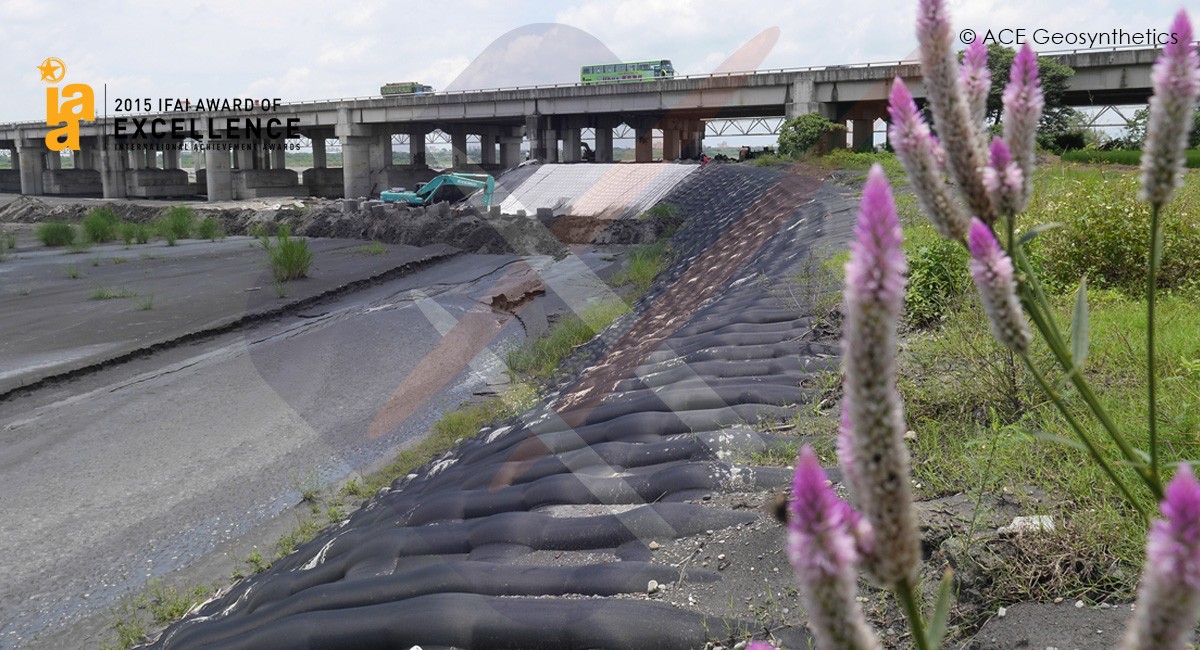
Protection of Pier Foundation of Zhongsha Bridge at Zhuoshui River, Changhua, Taiwan
Application:Revetments, Pier Scour Protection System
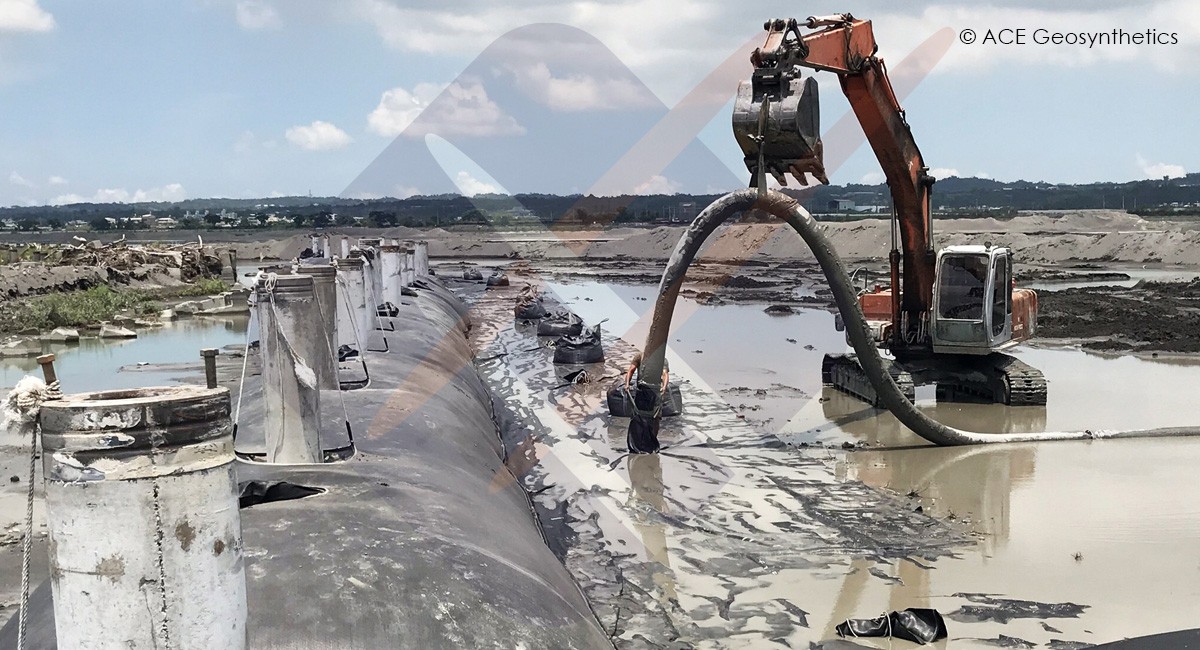
Restoration of No. 6 Groin with ACETube®, Gaoping River Weir, Taiwan
Application:Wing Dams / Groynes
